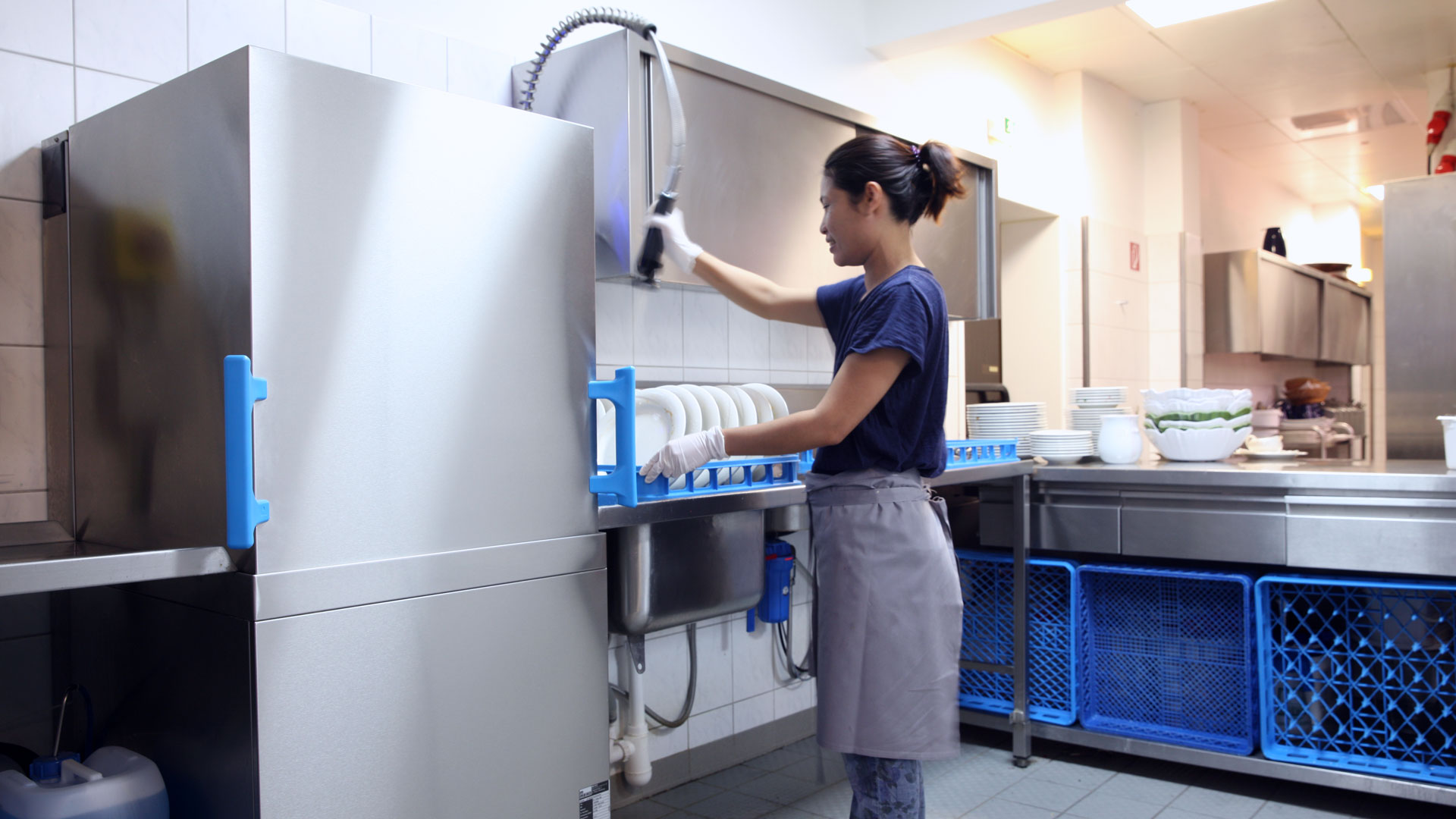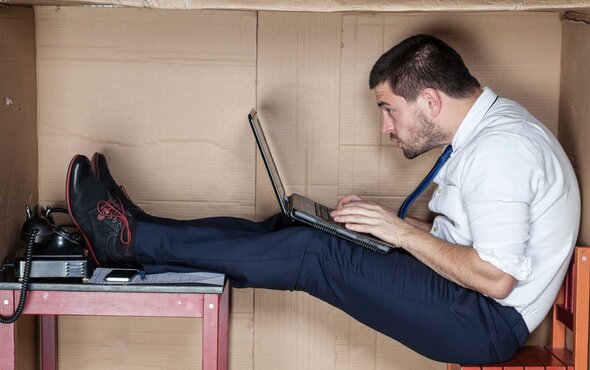The restaurant is fully booked. As of 7:30 pm, every table will be occupied and all the customers are looking forward to a fun and relaxing evening with some good food and wine. To ensure they meet those expectations, the head chef and restaurant manager have made meticulous preparations, buying fresh produce, carefully preparing the ingredients and sauces, and getting all the staff organised. Everything is ready for a perfect evening. Then, the phone rings. Within the space of five minutes, two key members of kitchen staff call in sick.

This happens millions of times a day in restaurants, bars, cafés and hotels all over the world. As well as colds, flu and similar ailments, other common causes are musculoskeletal complaints such as back pain, skeletal disorders, lumbago, sciatic pain and spinal disc problems. Of course, nobody can fully prevent these conditions from occurring. However, clever kitchen planning that takes full account of ergonomics can help improve the overall situation in the workplace.
ERGONOMICS IMPROVES EFFICIENCY
Professor Peter Schwarz – a physicist who teaches in the Faculty of Life Sciences at Albstadt-Sigmaringen University in Germany – is convinced that the issue of ergonomics in commercial kitchen planning is here to stay. ‘Anyone planning a restaurant or commercial kitchen needs to be an expert in process and logistics planning, because ultimately they are dealing with a manufacturing environment for producing meals, albeit on a small scale. Taking ergonomics into consideration is a key part of the planning process,’ says the ergonomics expert.
Convenience at the touch of a button: with the M-iClean hood type dishwashing machine,
the hood no longer needs to be laboriously opened and closed by hand
FOOD SERVICE IS TOUGH ON THE BACK
Back pain has many possible causes, ranging from inactivity and stress to poor posture. And people who work in the food-service industry face a range of other challenges, too. They tend to be on their feet more than in many other professions, often working ten-hour shifts and doing physically demanding jobs. Anyone who works in a restaurant or commercial kitchen knows how important it is to have ergonomic working conditions and workflows that make the best use of the time and space available. What's equally important is how you arrange the equipment itself. For example, glasswashers and dishwashing machines should be arranged in the dishwashing area in a way that produces the highest quality and most cost-effective results. At the same time, the people working there should not be put under too much physical strain, and they certainly should not come to any harm, even if they do the same job over a period of many years.

WORKING HEIGHT IS KEY
The ideal height of a kitchen work surface depends on the height of the people working there. The work surface height for a chef or kitchen assistant who is 1,74m tall should be approximately 98cm, for an employee measuring 1,55m, a work surface height of 85cm is sufficient.
HAVE THEIR BACK
As a basic rule of thumb: all built-in electrical appliances that are in frequent use should be positioned at an optimal height to reach. That makes work easier and goes easy on people's backs. Ensure that all kitchen workspaces are properly lit.
KEEP IT SHORT
When planning a professional large-scale kitchen, the work processes expected to take place there should be factored in at an early stage. Taking a dishwashing area as an example: which side will the dirty dishes be coming from? Where must they be transported to after going through the dishwashing machine and what is the distance between these two points? How many employees are involved in the process? Etc. etc. Any journey saved also time – and that saves money.
CLIMATE CONTROL
The indoor climate in a large-scale kitchen has a significant impact on the kitchen's ergonomics. ‘If the temperature in the kitchen increases to 28°C, productivity drops to 70 %. At 33°C, it drops even further, to 50 %,’ calculates ergonomics expert Professor Peter Schwarz. The humidity in your food-service kitchen also plays a large role. It is therefore also important for commercial dishwashing machines to release as little steam as possible into the room when their cycle is finished.
EMPLOYEE FOCUS
A workplace which is well equipped for good ergonomics helps keep employees happy and increases productivity. This is why attention should be paid even to small details such as where and how the operating panel is attached to the dishwashing machine, what the viewing distance is, etc.
IN EASY REACH
Rummaging is off the menu for well organised kitchens. It would be a nightmare. Rather, everything should be in its proper place – knives, spoons, ladles, bowls, seasoning, etc. should always be stored in their assigned locations and within easy reach. Seldom-used items can be stashed away in cupboards.
In addition, factors such as temperature and air humidity – i.e. the indoor climate – impact the ergonomics of a food-service or restaurant kitchen as a workplace: ‘If the temperature in the kitchen increases to 28°C, productivity drops to 70 %. At 33°C, it drops even further, to 50 %,’ calculates ergonomics expert Professor Peter Schwarz of Albstadt-Sigmaringen University. But MEIKO has a solution for this, too. Dr. Thomas Peukert, Head of the Design and Engineering Department stresses, ‘On request, we equip every M-iClean HM and HL with a heat recovery system or integrate an additional panel to keep steam inside the hood when the hood is opened.
Both of these options improve the indoor climate and ensure that people are not subjected
to unnecessarily high temperatures or clouds of steam.’
PLANNING IN A FOOD-SERVICE KITCHEN:
ergonomics expert Peter Schwarz knows that intelligent kitchen planning results in reduced absenteeism in food service.
He is the author and editor of the standard reference work in kitchen planning, ‘Großküchen: Planung – Entwurf – Einrichtung ’ (Commercial kitchens: planning – designing – fitting), published by Huss in Germany. As well as the aspects discussed above, the quality of an ergonomic workplace also depends on geometric parameters. In other words, it raises questions such as: how far away is the dishwasher? What position do I have to be in to see the machine's operating panel? From how far away can I see it? And from which angles? And the way a workplace is configured doesn't just have an effect on people's bodies. Peter Schwarz says, ‘If people are happy in their job, if they feel valued and enjoy their work, then their efficiency will automatically increase. It also means that they won't simply call in sick at every opportunity.’





